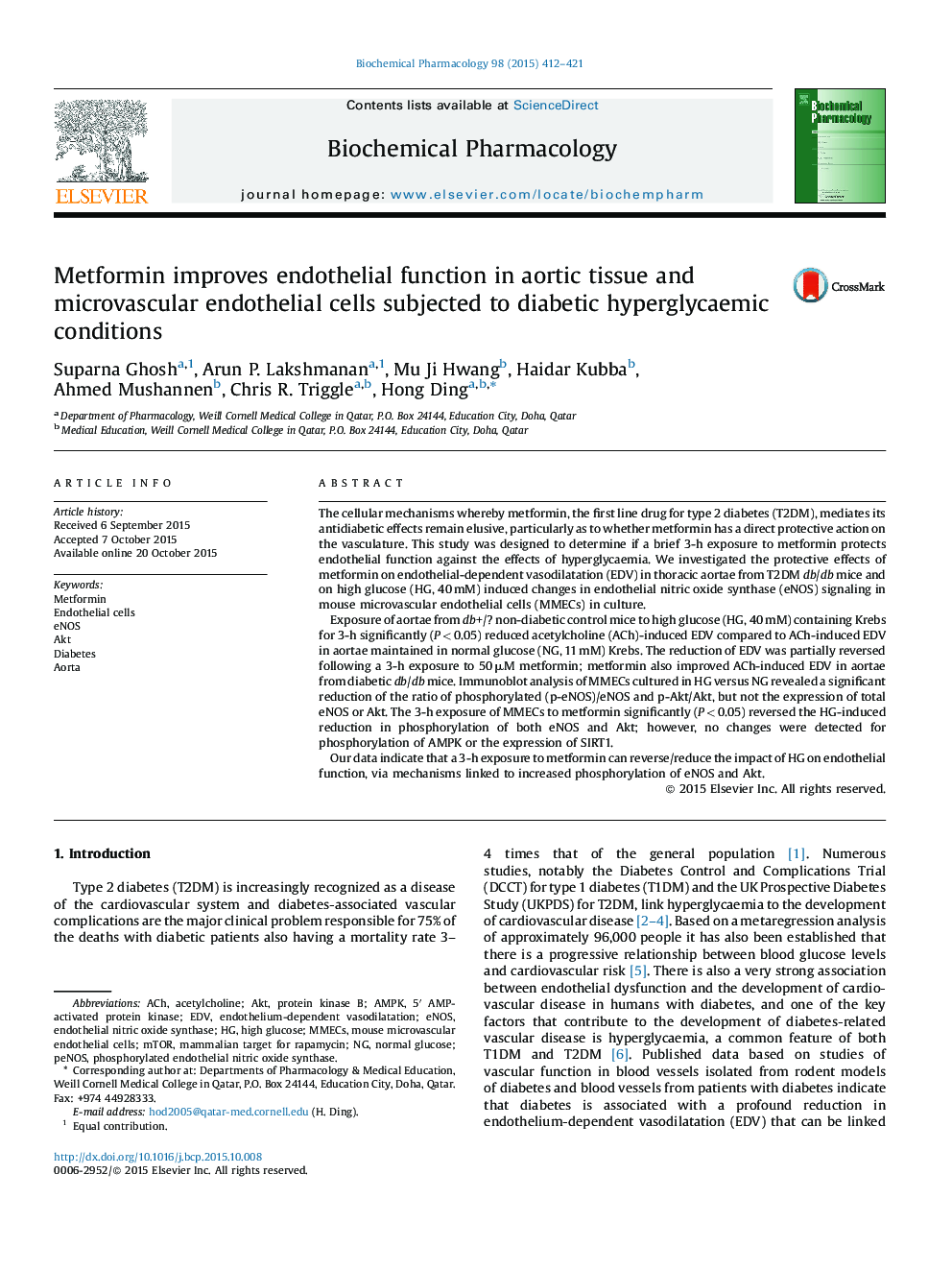| کد مقاله | کد نشریه | سال انتشار | مقاله انگلیسی | نسخه تمام متن |
|---|---|---|---|---|
| 2511864 | 1118295 | 2015 | 10 صفحه PDF | دانلود رایگان |
The cellular mechanisms whereby metformin, the first line drug for type 2 diabetes (T2DM), mediates its antidiabetic effects remain elusive, particularly as to whether metformin has a direct protective action on the vasculature. This study was designed to determine if a brief 3-h exposure to metformin protects endothelial function against the effects of hyperglycaemia. We investigated the protective effects of metformin on endothelial-dependent vasodilatation (EDV) in thoracic aortae from T2DM db/db mice and on high glucose (HG, 40 mM) induced changes in endothelial nitric oxide synthase (eNOS) signaling in mouse microvascular endothelial cells (MMECs) in culture.Exposure of aortae from db+/? non-diabetic control mice to high glucose (HG, 40 mM) containing Krebs for 3-h significantly (P < 0.05) reduced acetylcholine (ACh)-induced EDV compared to ACh-induced EDV in aortae maintained in normal glucose (NG, 11 mM) Krebs. The reduction of EDV was partially reversed following a 3-h exposure to 50 μM metformin; metformin also improved ACh-induced EDV in aortae from diabetic db/db mice. Immunoblot analysis of MMECs cultured in HG versus NG revealed a significant reduction of the ratio of phosphorylated (p-eNOS)/eNOS and p-Akt/Akt, but not the expression of total eNOS or Akt. The 3-h exposure of MMECs to metformin significantly (P < 0.05) reversed the HG-induced reduction in phosphorylation of both eNOS and Akt; however, no changes were detected for phosphorylation of AMPK or the expression of SIRT1.Our data indicate that a 3-h exposure to metformin can reverse/reduce the impact of HG on endothelial function, via mechanisms linked to increased phosphorylation of eNOS and Akt.
Figure optionsDownload as PowerPoint slide
Journal: Biochemical Pharmacology - Volume 98, Issue 3, 1 December 2015, Pages 412–421
